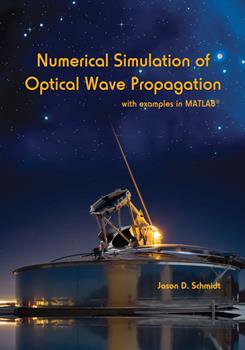|
The primary reason to use simulations is to tackle problems that are analytically intractable. As a result, any computer code that simulates optical-wave propagation needs to handle almost any type of source field. Wave-optics simulations are based on DFTs, and we saw in Ch. 2 that aliasing poses a challenge to DFTs. When the waveform to be transformed is bandlimited, we just need to sample it finely enough to avoid aliasing altogether (satisfying the Nyquist criterion). However, most optical sources are not spatially bandlimited, and the quadratic phase term inside the Fresnel diffraction integral certainly is not bandlimited. These issues have been explored by many authors.30, 31, 35, 37, 42, 54, 55 Because an optical field's spatial-frequency spectrum maps directly to its planewave spectrum,5 propagation geometry places a limit on how much spatial frequency content from the source can be seen within the observing aperture. Note that this is physical; it is not caused by sampling. This principle is the foundation of Coy's approach to sampling, and guides most of our discussion on sampling needs in this chapter. 7.1 Imposing a Band Limit The optical field at each point in the source plane emits a bundle of rays that propagate toward the observation plane. Each ray represents a plane wave propagating in that direction. Let us start by examining the propagation geometry to determine the maximum plane-wave direction relative to the reference normal from the source that is incident upon the region of interest in the observation plane. Clearly, it is critical to pick the grid spacing and number of grid points to ensure an accurate simulation. The following development uses the propagation geometry to place limits on the necessary spatial-frequency bandwidth, and consequently, the number of sample points and grid spacing. This determines the size and spacing of the source-plane grid and the size and spacing of the observation-plane grid. |
|
|


